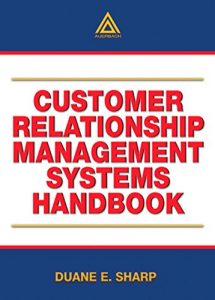The concept of customer relationship management (CRM) has grown from the loosely defined methodology of using customer transactions for developing profiles on customers to the well-defined business process of using sophisticated tools and analytical processes for managing each customer on an individual basis. CRM integrates e-mail and the PDA with the day planner, electronic scheduler, client database, and a number of other business management tools so you can create a single point from which to manage customer relationships.
The Customer Relationship Management Systems Handbook provides a complete and detailed analysis of CRM, its origins, rationale, implementation strategies, core technologies, and benefits. The author takes readers through the evolution of CRM- from its early beginning as a tool for better managing and utilizing vast amounts of customer transaction data acquired in day-to-day transactions to today's sophisticated data warehouse-based systems. The text was researched, formatted, and written for IS professionals who need a full understanding of what is involved in the successful development and implementation of a CRM.
To highlight the significant benefits of implementing CRM strategies, the book provides examples of successful CRM implementations from a broad range of business sectors. These implementations, presented in a case study format, demonstrate implementation processes, appropriate technologies, and vendor solutions that work. Wherever possible, illustrations are used to enhance the textual presentation. The complete analysis of CRM provided in the Customer Relationship Management Systems Handbook will enable you to accomplish what many businesses fail to do-put the customer first.
The Customer Relationship Management Systems Handbook provides a complete and detailed analysis of CRM, its origins, rationale, implementation strategies, core technologies, and benefits. The author takes readers through the evolution of CRM- from its early beginning as a tool for better managing and utilizing vast amounts of customer transaction data acquired in day-to-day transactions to today's sophisticated data warehouse-based systems. The text was researched, formatted, and written for IS professionals who need a full understanding of what is involved in the successful development and implementation of a CRM.
To highlight the significant benefits of implementing CRM strategies, the book provides examples of successful CRM implementations from a broad range of business sectors. These implementations, presented in a case study format, demonstrate implementation processes, appropriate technologies, and vendor solutions that work. Wherever possible, illustrations are used to enhance the textual presentation. The complete analysis of CRM provided in the Customer Relationship Management Systems Handbook will enable you to accomplish what many businesses fail to do-put the customer first.






